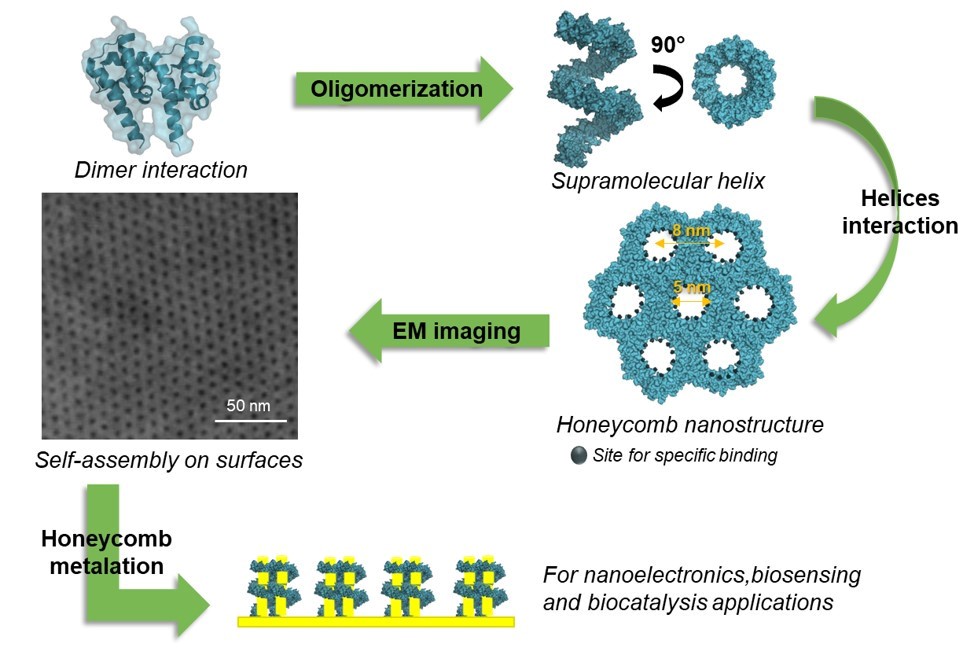SyMMES & LPCV
- Share
- Share on Facebook
- Share on X
- Share on LinkedIn

Surface nanopatterning with self-assembled molecules has gained in interest over the last years because of its usefullness in nanotechnology. In here, the natural abilities of a protein to self-assemble in a honeycomb structure on a surface was studied. Moreover, we also show that the nanostructure can be specifically functionnalized paving the way for nanoelectronics, biosensing and biocatalysis applications.
Self-Assembly of a Ginkgo Oligomerization Domain Creates a Sub-10-Nm Honeycomb Architecture on Carbon and Silicon Surfaces with Customizable Pores: Implications for Nanoelectronics, Biosensing, and Biocatalysis. Jacquier, E.; Jouneau, P.-H.; Falconet, D.; Mariolle, D.; Thévenon, E.; Si Larbi, G.; Tiron, R.; Parcy, F.; Elchinger, P.-H.; Dumas, R.. ACS Appl. Nano Mater. 2021, 4 (9), 9518–9526.
- Share
- Share on Facebook
- Share on X
- Share on LinkedIn